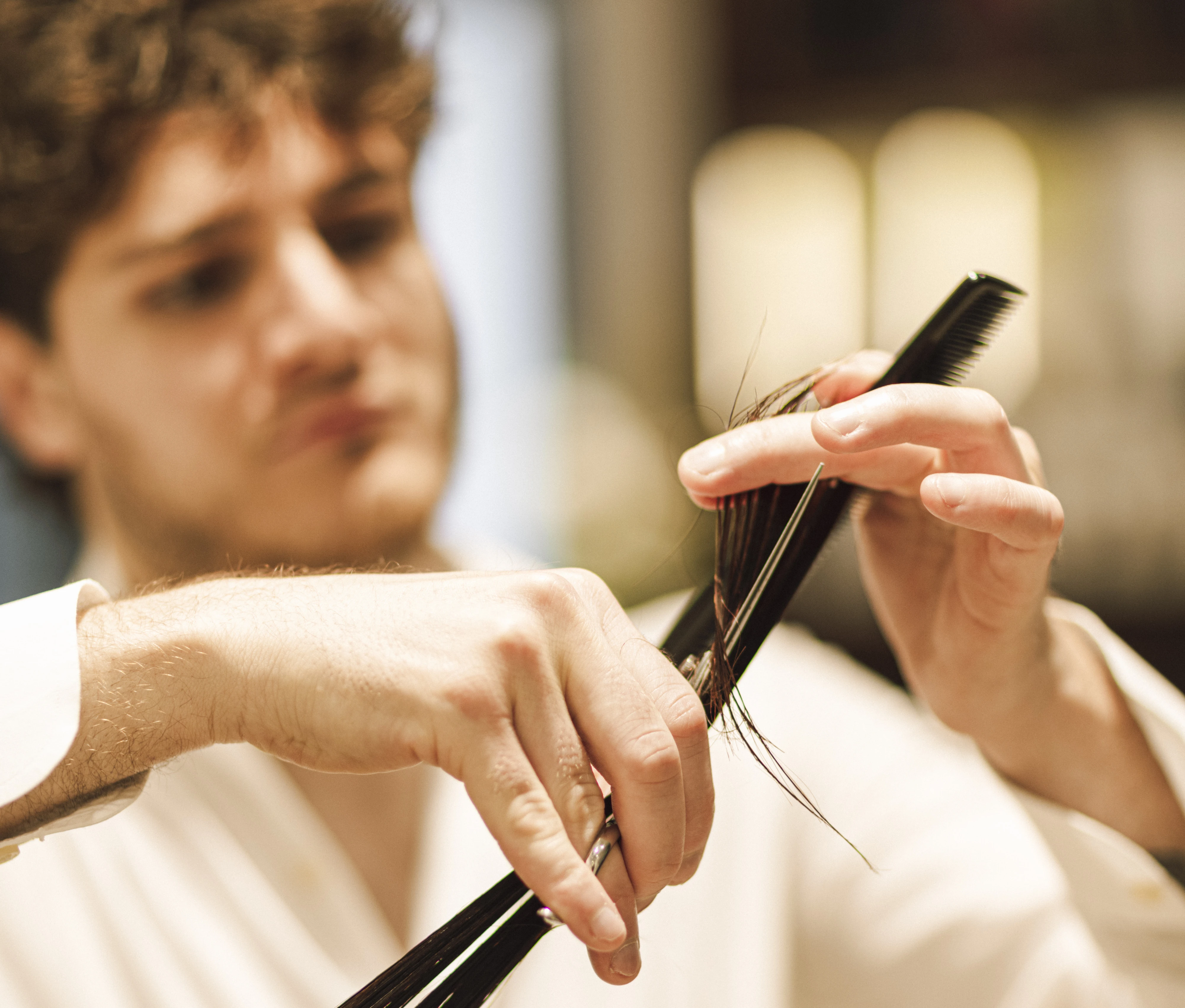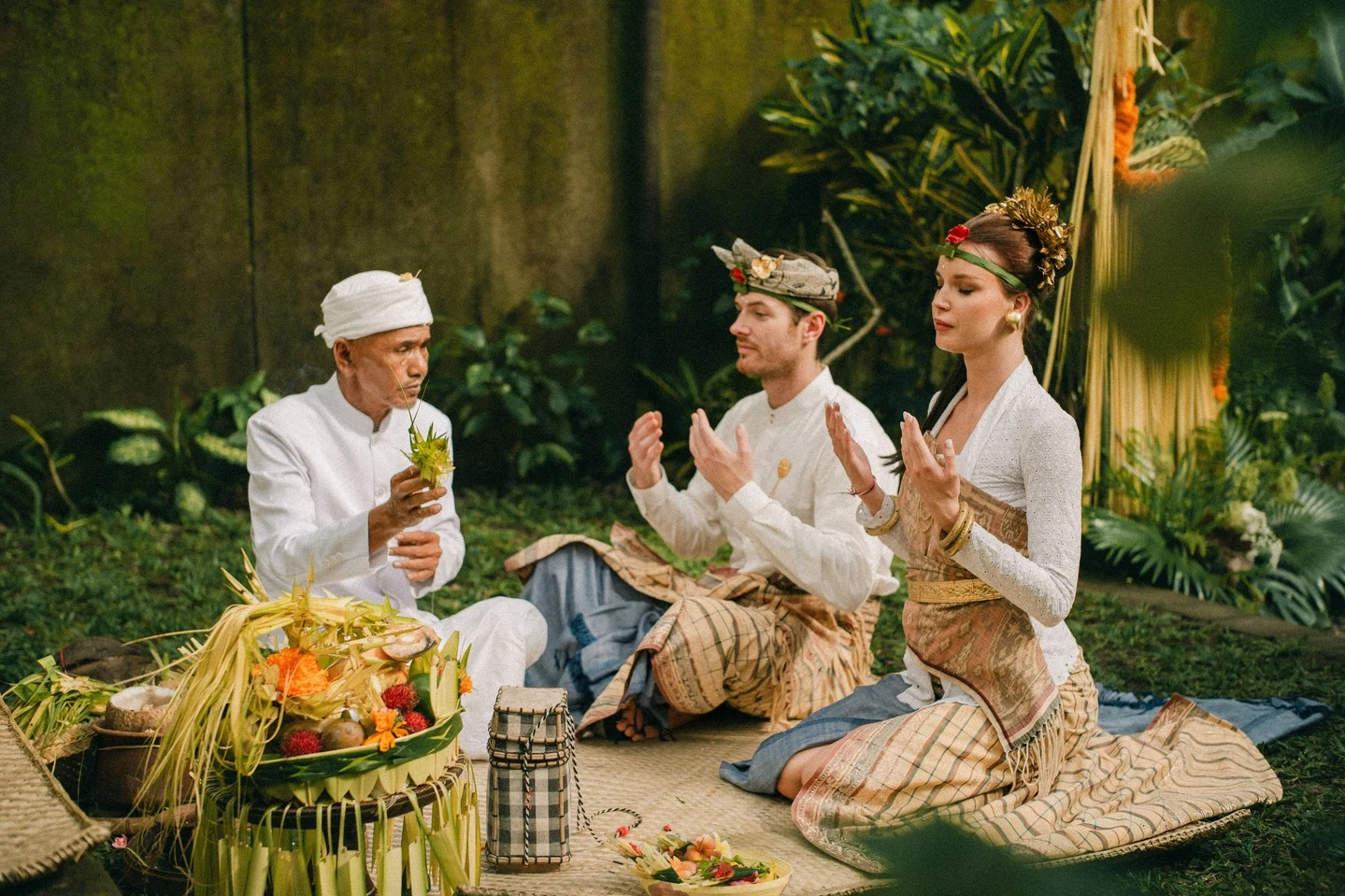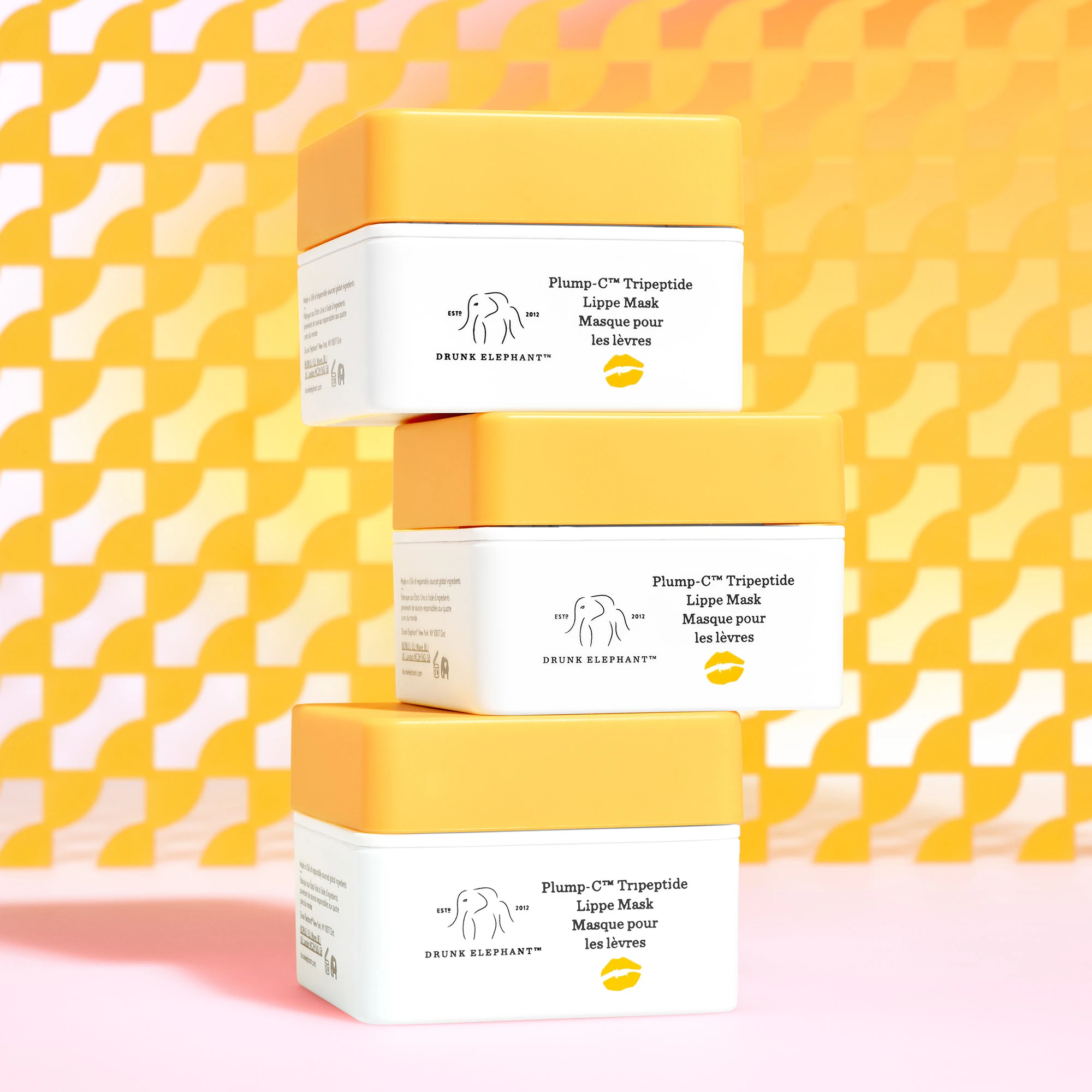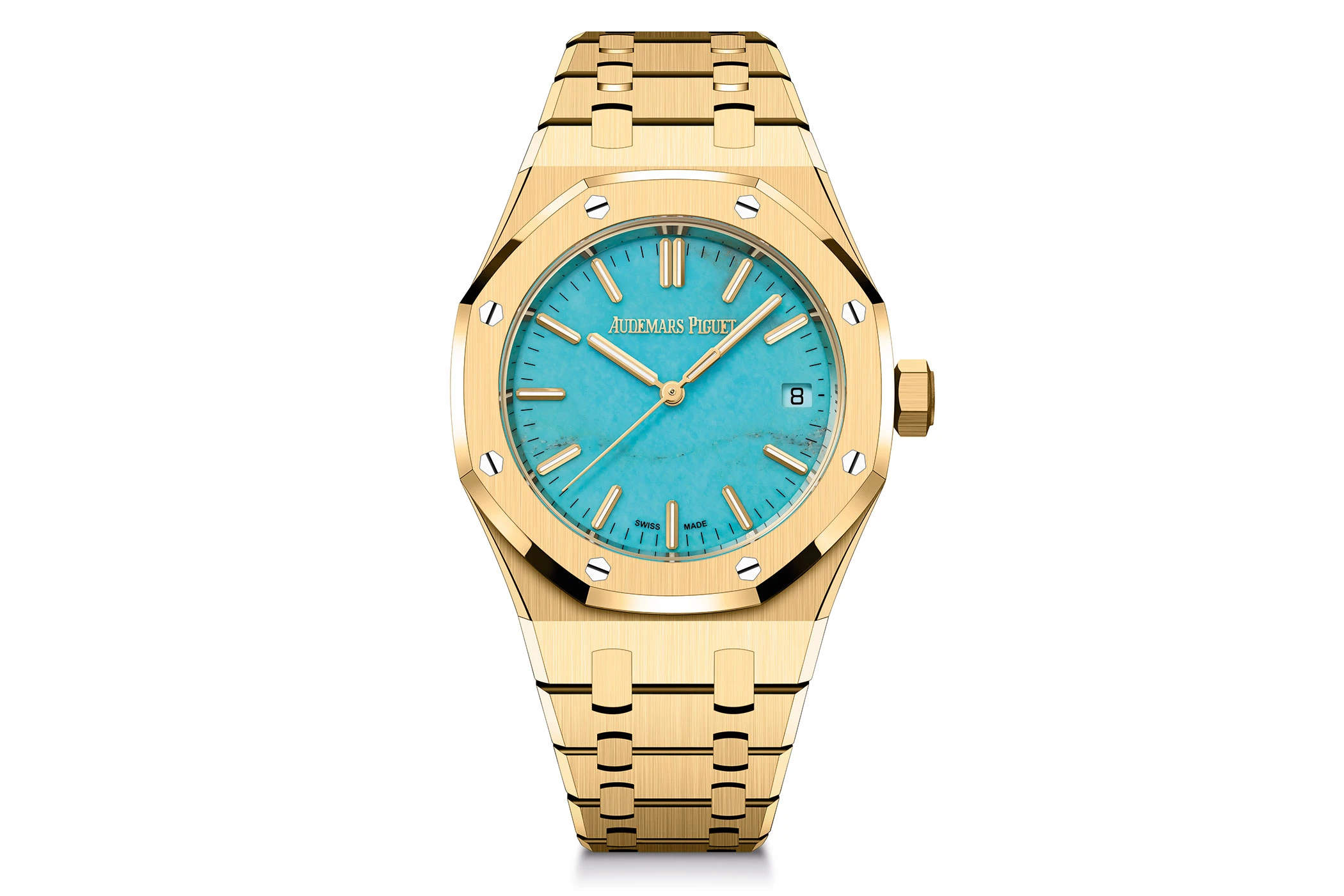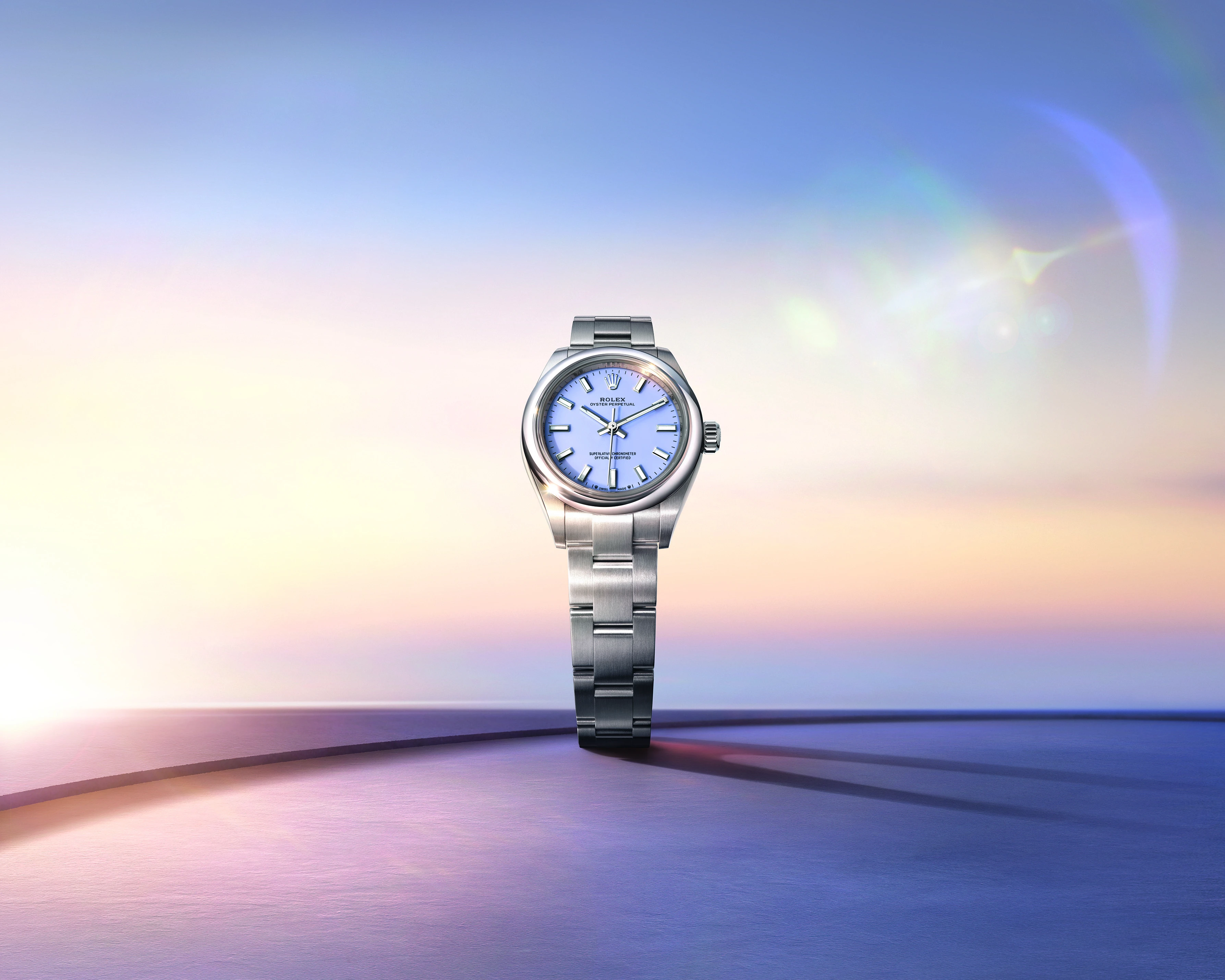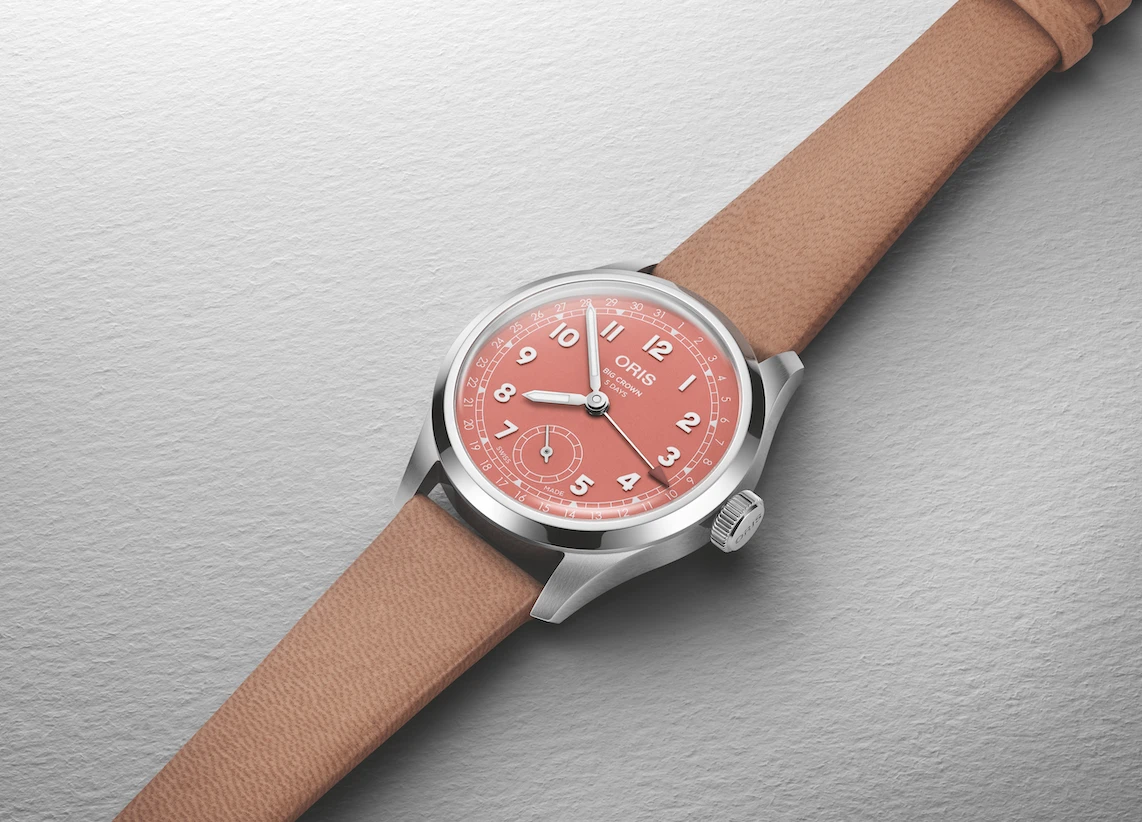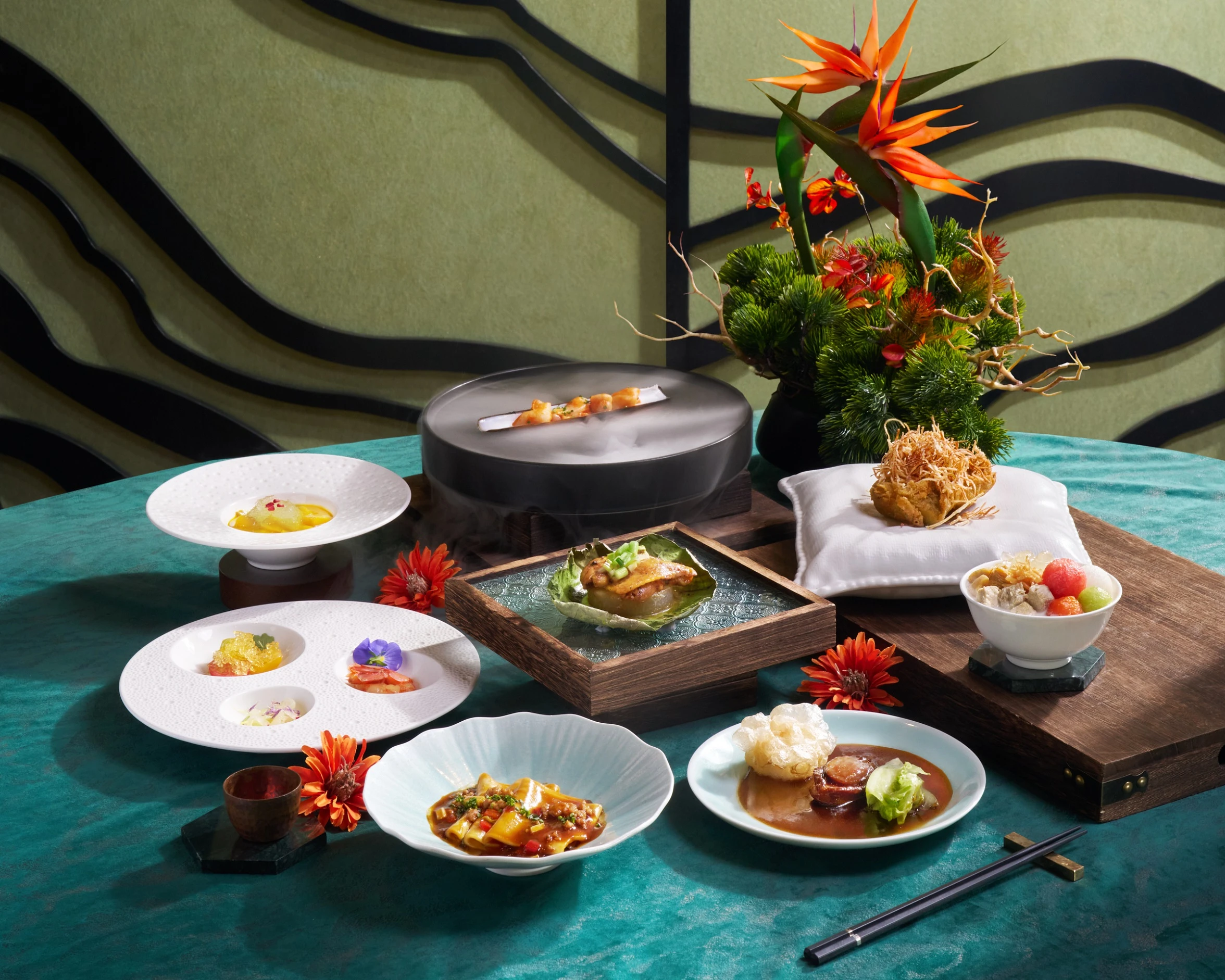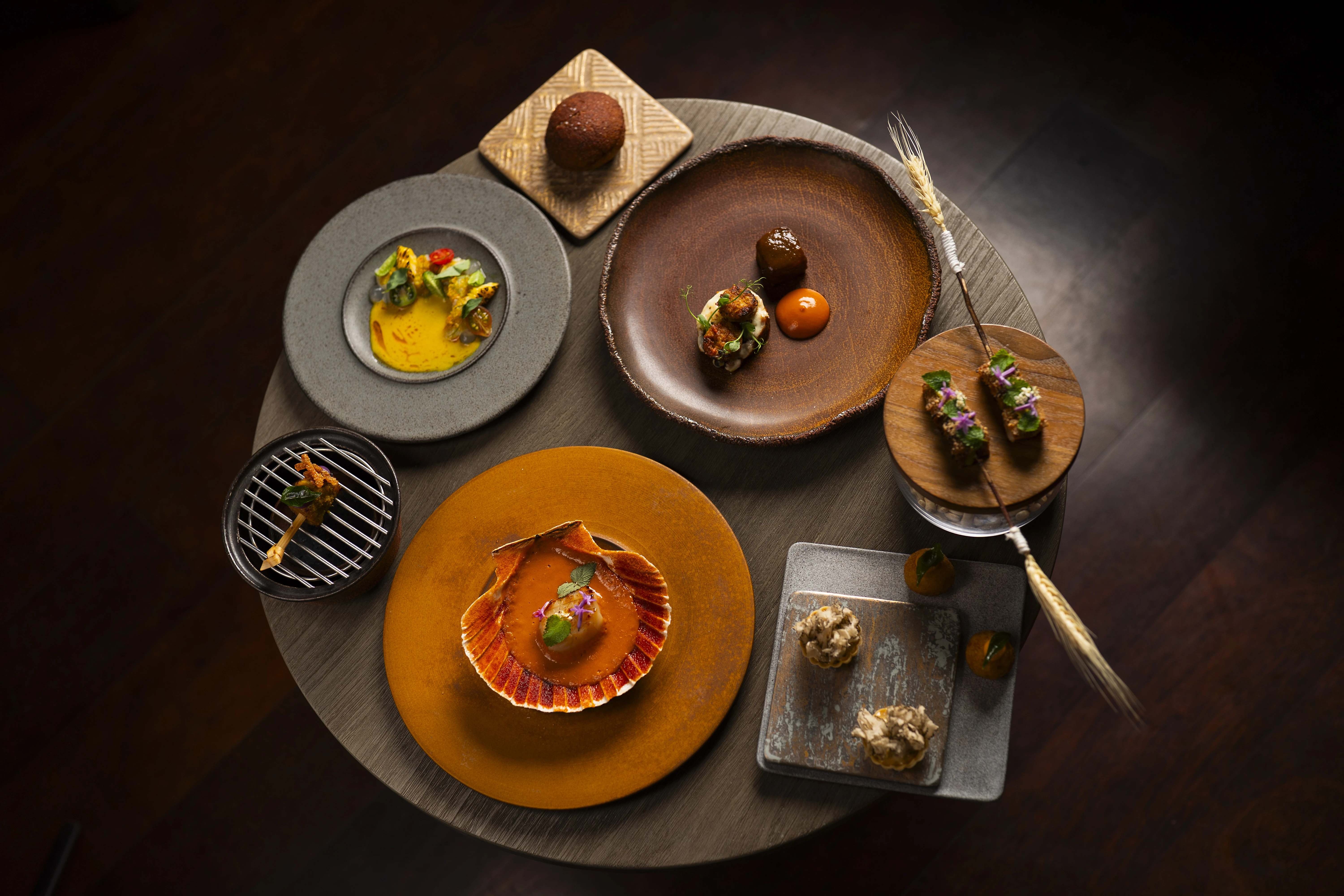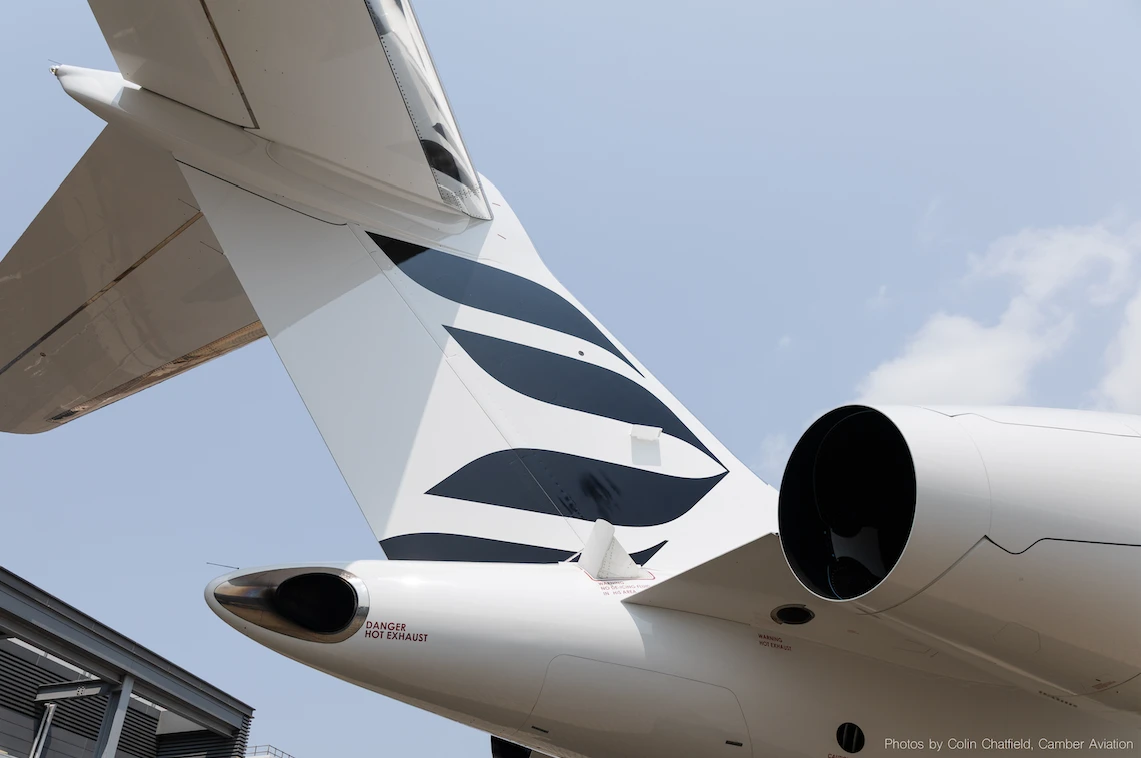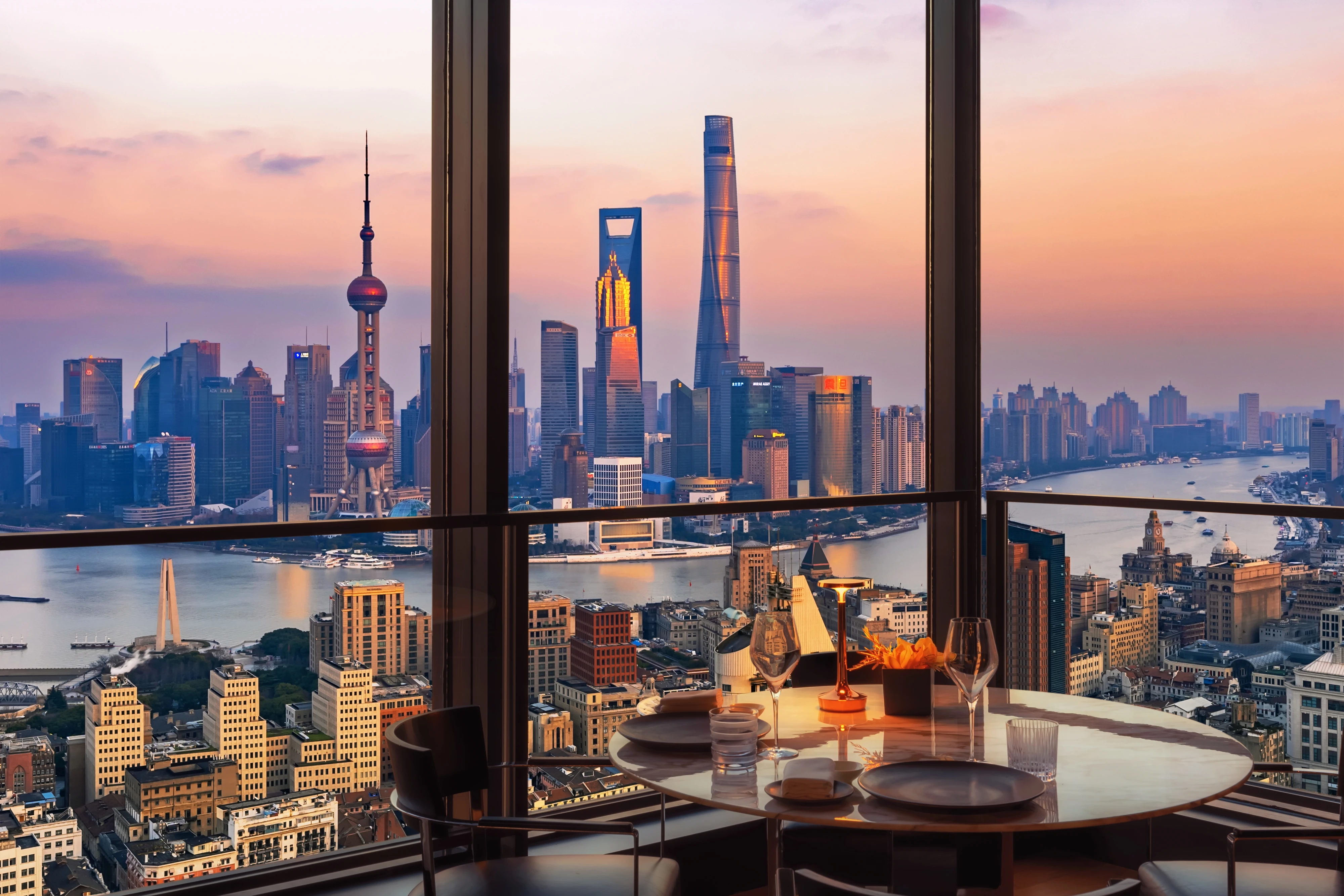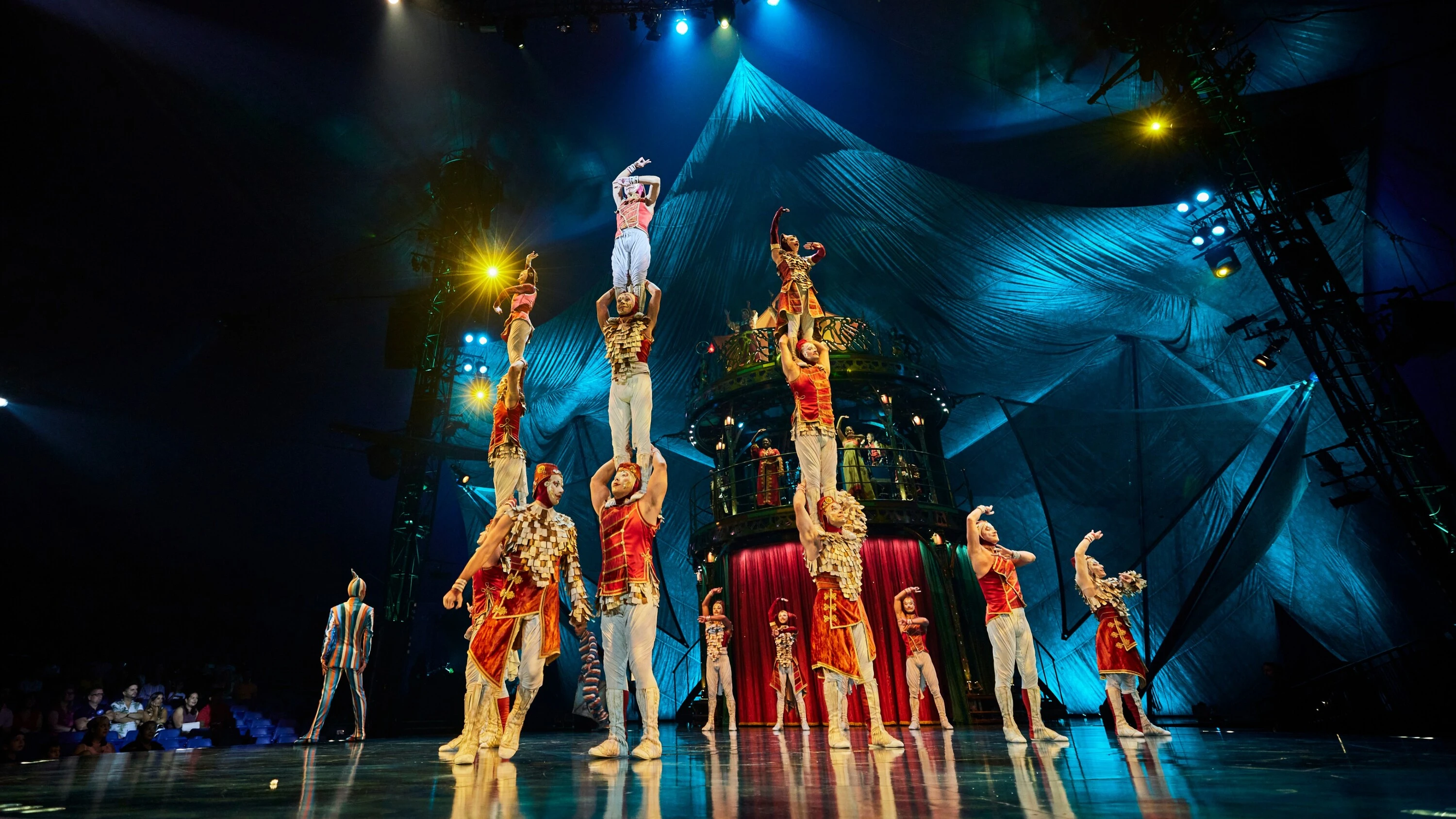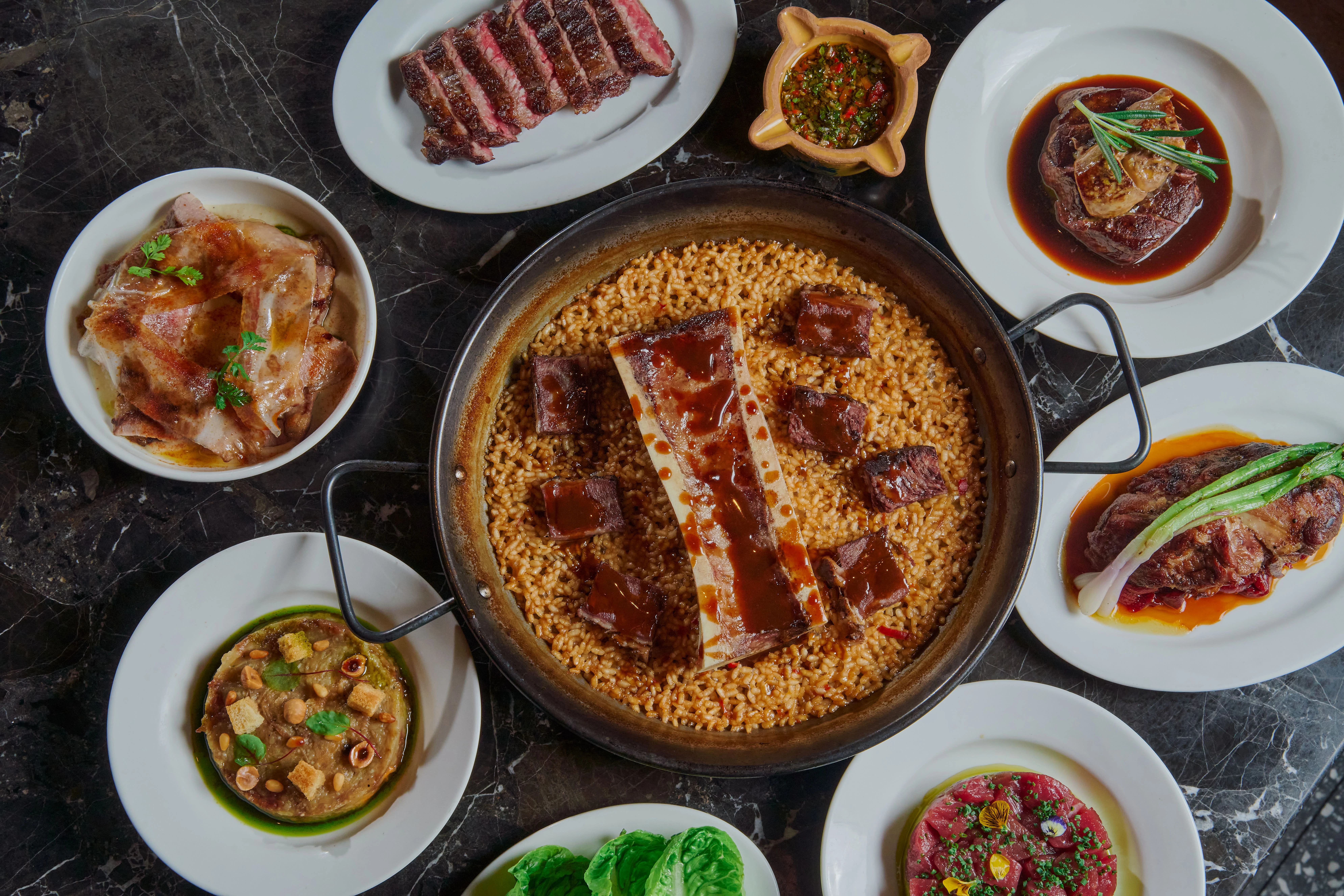Amber's Richard Ekkebus on winning a third Michelin star
May 21, 2025
After 16 illustrious years with two Michelin stars and one Green Star since 2022, Amber has finally clinched its third star. Richard Ekkebus, the heart and mind behind it, tells Stephenie Gee about getting here and what happens next
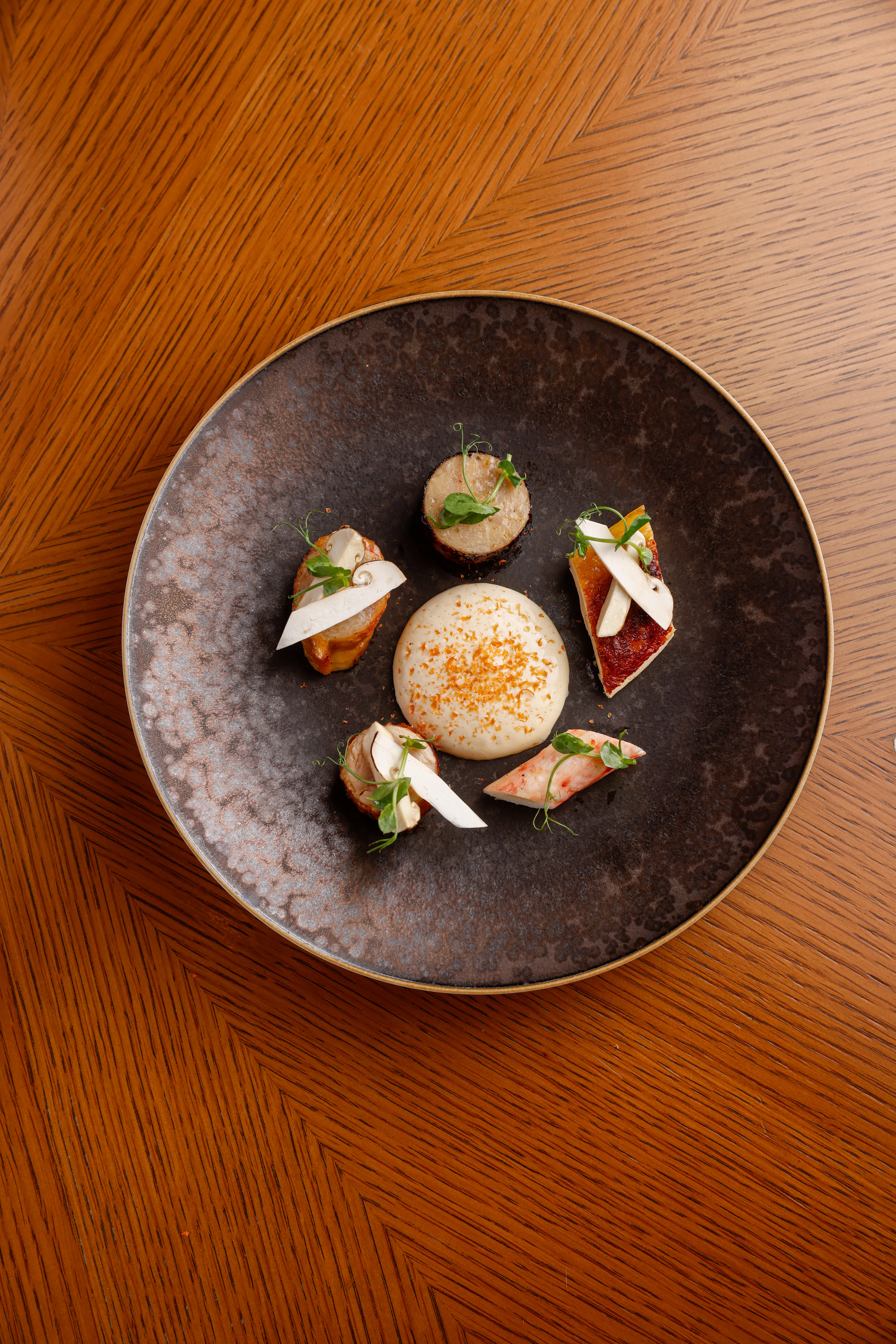
Today, the Michelin Guide counts a total of 3,690 starred restaurants across the globe. This prestigious star serves as a badge of honour, a testament to relentless dedication, and a recognition of culinary mastery. Not unlike the pursuit of a world championship in sports or a distinguished award in the arts, scoring a Michelin star – one, two or three – has become a lifelong aspiration for countless chefs.
But said stars are not easy to obtain. One Michelin star represents restaurants that are exceptional examples within their style of cuisine. Two indicates restaurants that warrant a detour for a gourmand traveller, should they be in their general area. Three stars, however, is the ultimate accolade, reserved only for the rare and the few, the gourmet temples, the places that are actually worthy of a trip on their own. Three stars is the Everest of fine dining, and the harsh truth is that not all chefs will make it to the top. For those who do, some ascents are meteoric, others take years. For Richard Ekkebus of Amber, 16.
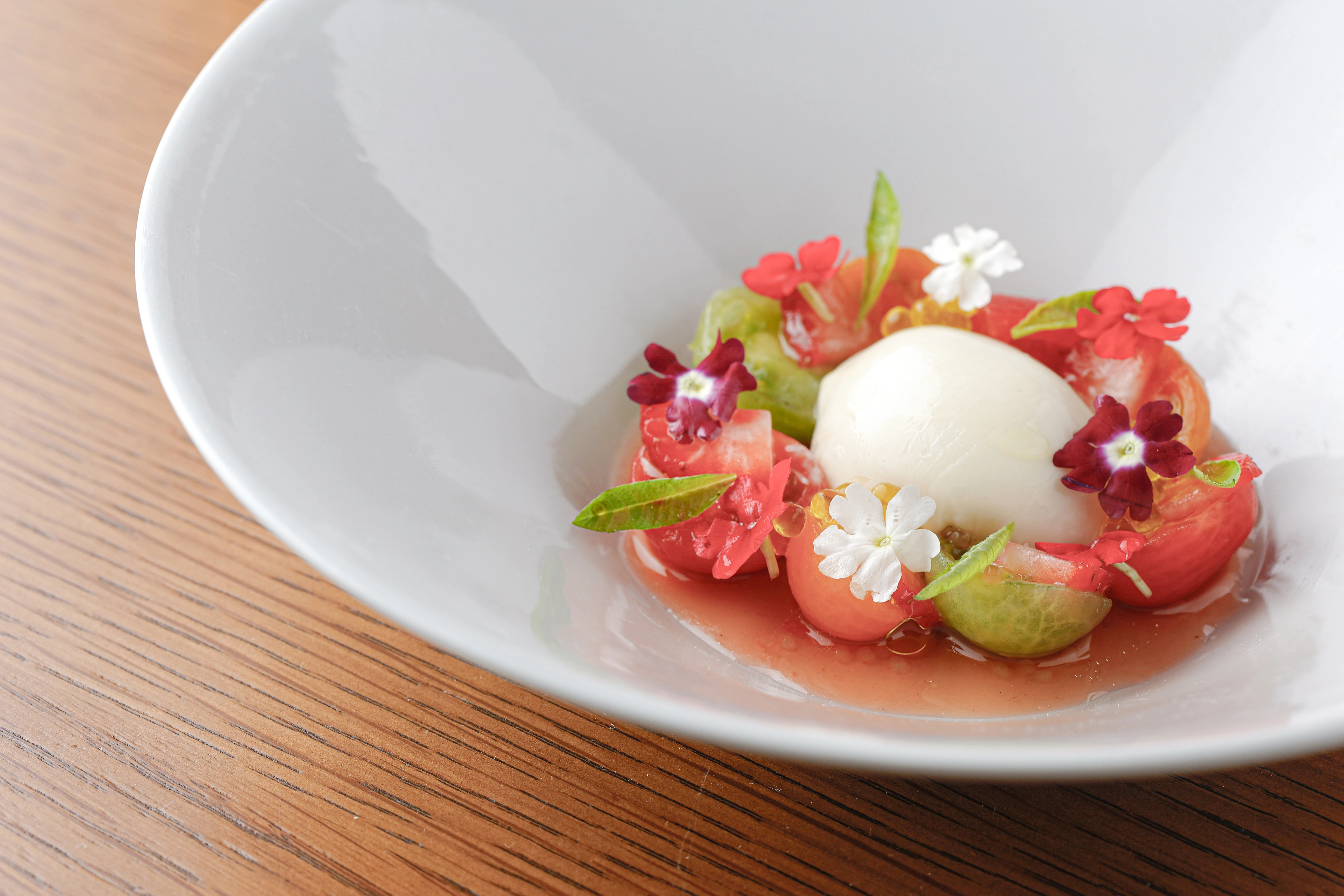
“Receiving our third Michelin star along with the retention of our Michelin Green Star is an incredible honour of touching the holy grail of gastronomy. Being the only restaurant in Hong Kong with the highest accolade of four stars comes with a lot of responsibility, but it recognises a lifelong journey and dedication to excellence at the very highest level,” says the Dutch-born chef. “All this would not be possible without my exceptional team, a supportive hotel group and proud owners Hongkong Land, Jardine and most importantly, my wife and family. Not to forget our purveyors, fishermen and farmers delivering us the finest ingredients; and our guests, media and partners that have supported us over the years. We are humbled and enjoying this moment profoundly and we are thankful to the Michelin Guide for their confidence in Amber.”
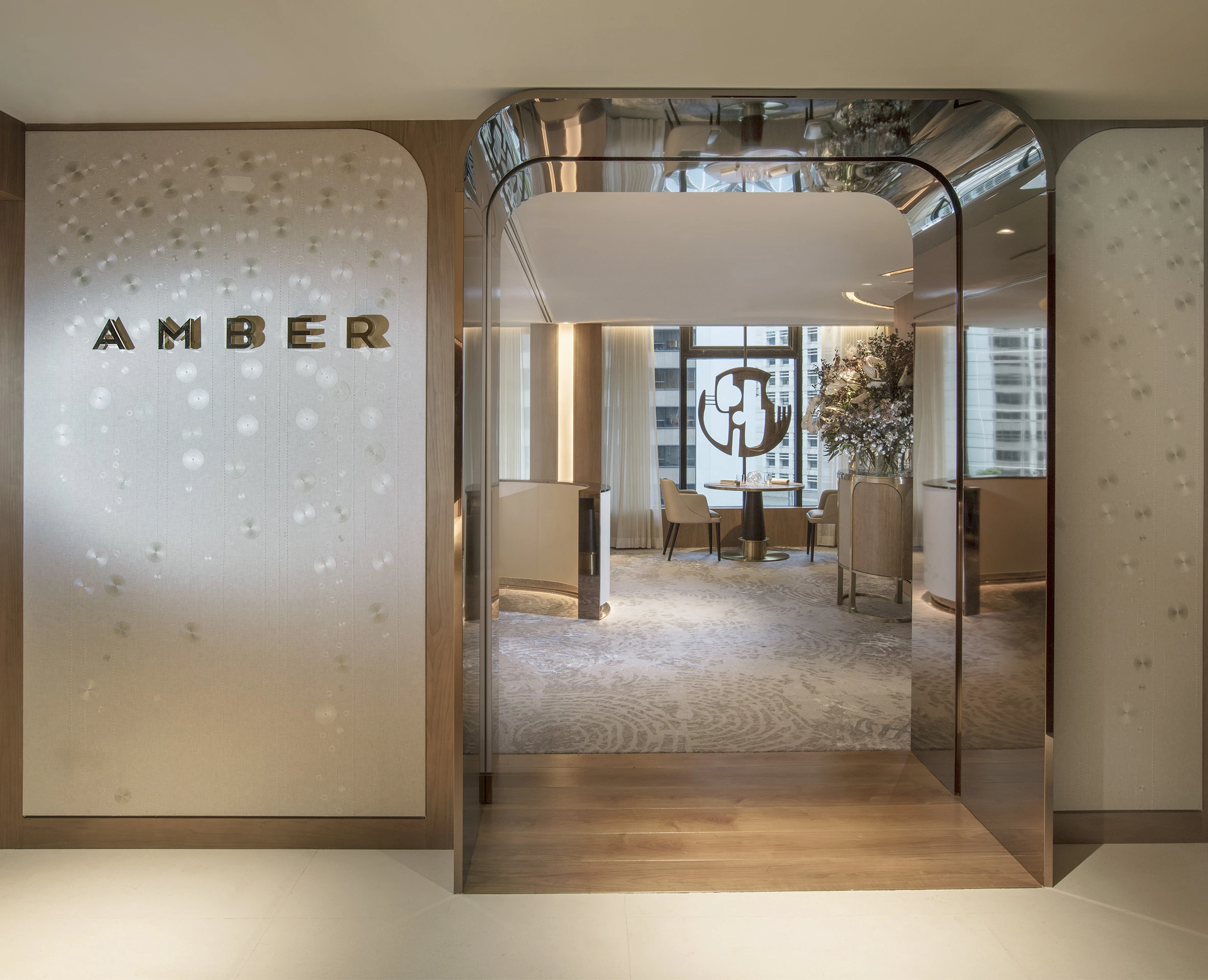
When Amber opened 20 years ago in The Landmark Mandarin Oriental, the intent was to be disruptive. And disruptive it was. Well-versed in Michelin Guide standards from having worked in one-, two- and three- starred restaurants across Europe from the age of 16 and been mentored by such luminaries as Alain Passard, Pierre Gagnaire and Guy Savoy, Ekkebus’s innovative, meticulous takes on classical French fare broke new ground – think Hokkaido sea urchin in a lobster Jell-O and raspberry-red foie gras lollipops. It took time, but his forward-thinking vision proved successful. In the inaugural 2009 edition of the Michelin Guide Hong Kong and Macau, Amber made its debut with two Michelin stars, which it retained for 16 consecutive years.
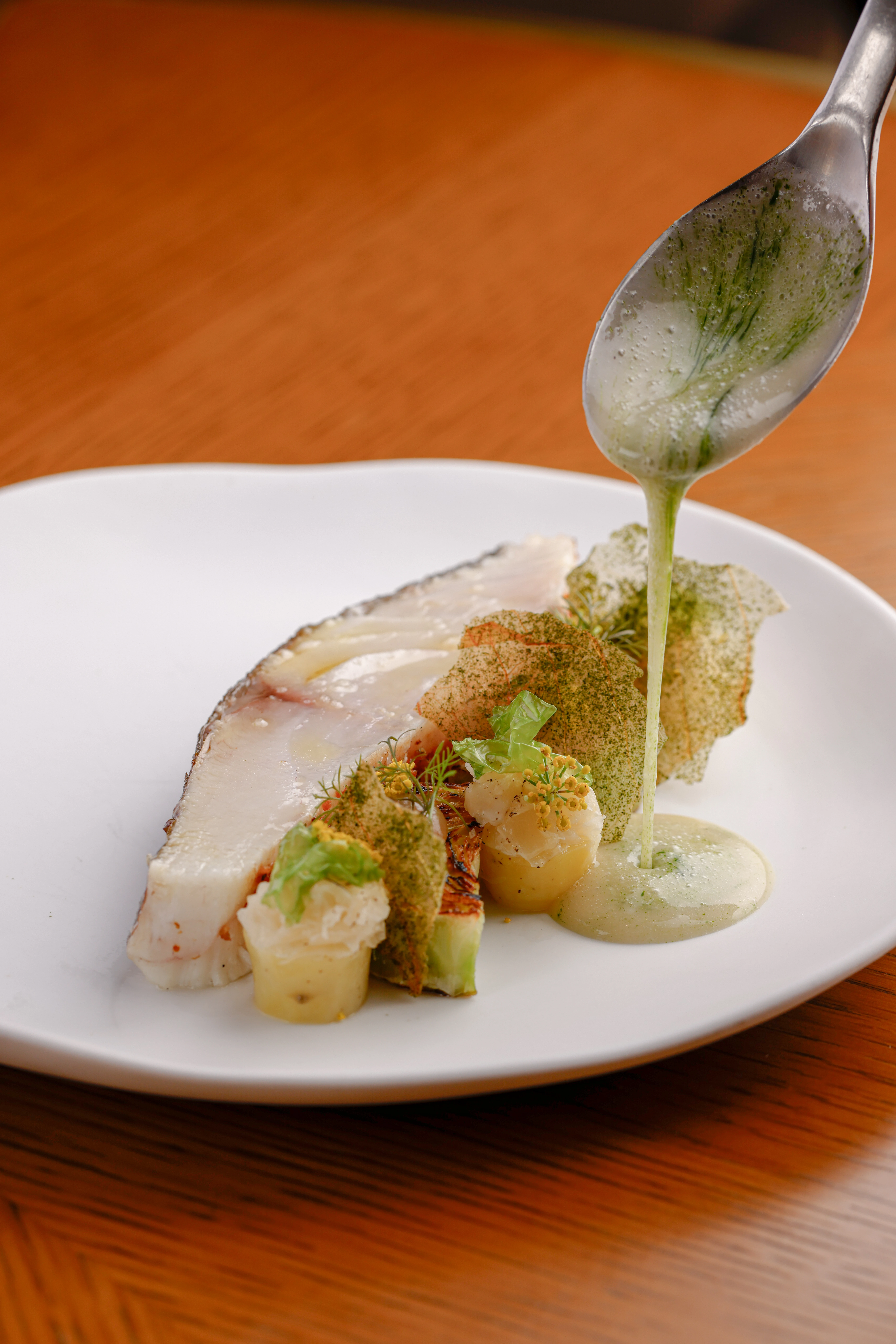
But never one to rest on on his laurels, Ekkebus decided to take on the new challenge of reinventing what was essentially a faultless restaurant. “Running a restaurant is challenging and that’s why it’s so addictive,” he says. “I chose a job that I do not consider work
because it’s something that I love to do. Challenges are opportunities and I never shy away from a challenge. I’m a mountaineer, and alpinists always look for the hardest route to climb a mountain because we see that as the most rewarding. I apply the same approach in my professional life. If it were easy and without a challenge, it would not be fun. The path I take is full of obstacles, but it provides us opportunities to show our guests that a dining experience can be different, which is why we have been able to remain relevant throughout the years.”
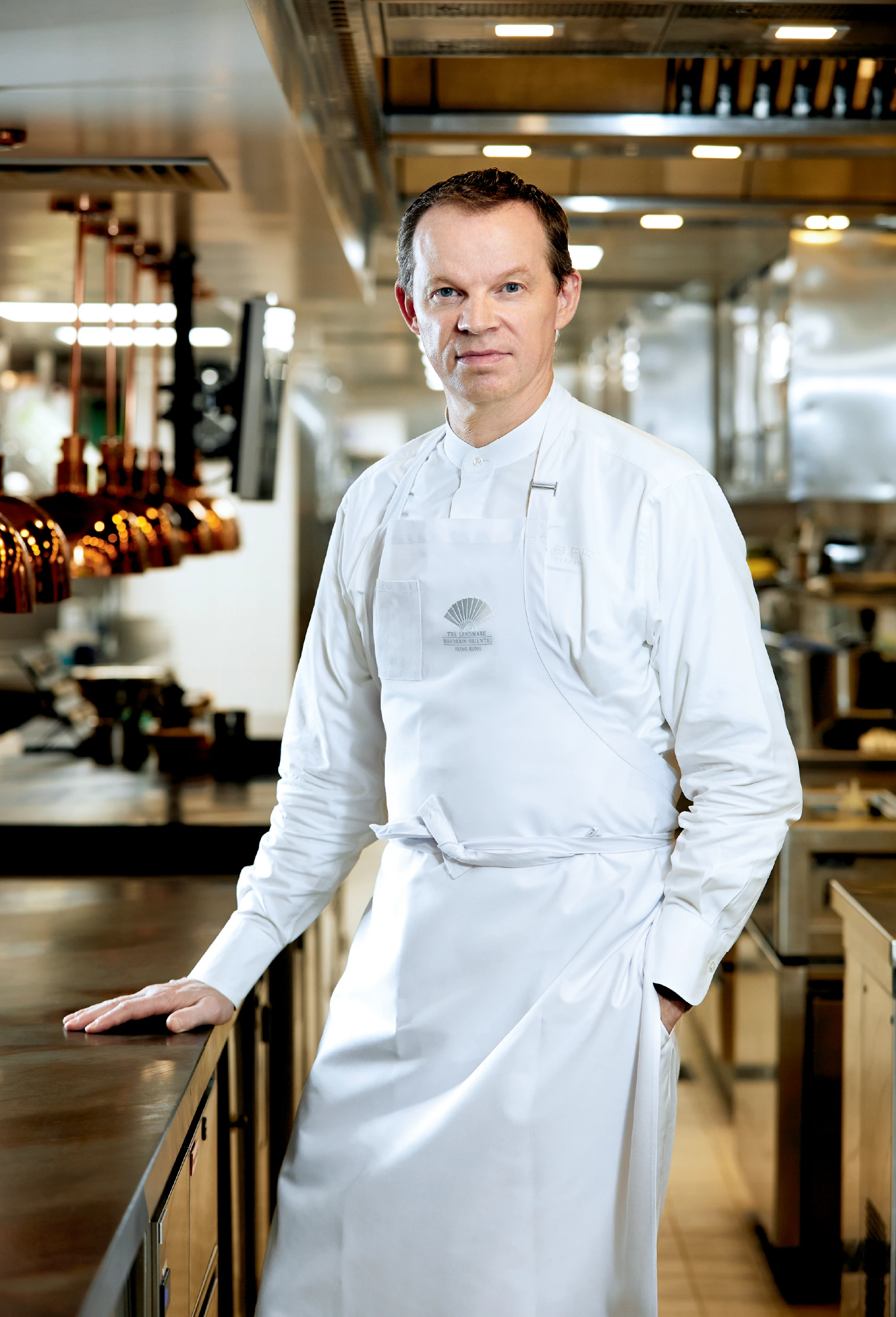
So, in December 2018, Ekkebus closed the doors to his dining room for a four-month renovation, during which he spent his time evolving a bold new culinary philosophy rooted in ethics and sustainability. When it reopened in May 2019, he had not only overhauled Amber’s sultry, masculine interiors, but also its contemporary French-driven menu. In a nod to the needs and expectations of today’s health-conscious diners, the restaurant’s progressive menu had dispensed with dairy and gluten, and minimised refined sugar and reduced salt, restoring flavours to their purest essence. Where salt is needed, it is distilled from natural umami through ingredients like seaweed. Sugar is replicated through natural ingredients such as agave, maple and honey while cream, milk and butter – ubiquitous ingredients in French kitchens – are replaced with substitutes like soy, rice, nut milks and vegetable-based oils.
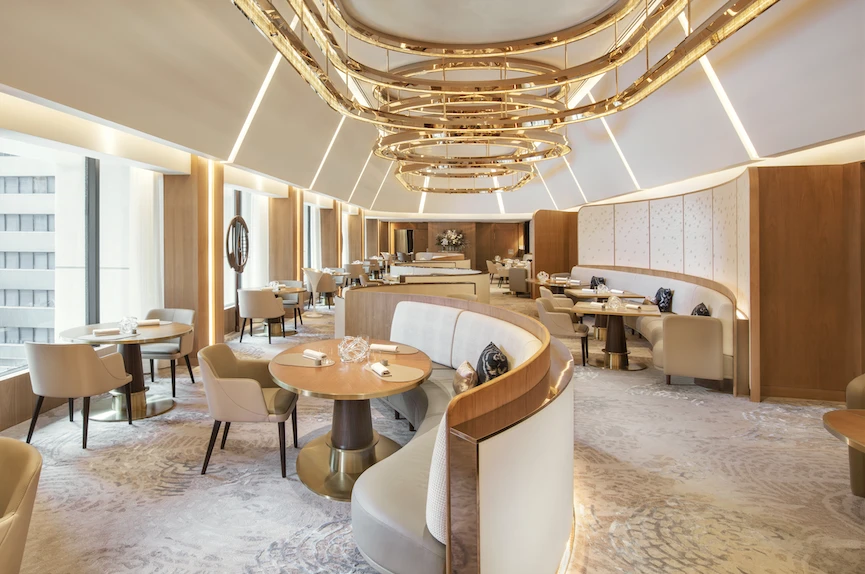
“At that time, we were one of the most successful restaurants in Hong Kong and gained nearly every recognition that existed in this world. I could have surfed that wave of success, but that’s simply not in my nature. I decided that we had to rewrite the direction of the restaurant in order to safeguard another 15 years of success and appeal to a clientele that’s ahead of us,” Ekkebus recalls. “I never wanted Amber to become a museum restaurant in Hong Kong. We had to remain focused on being relevant and to ensure we have a USP. It was the culmination of my lessons learned over 15 years – 70% of Asians are lactose intolerant, so the desire for food to be indulgent but less heavy was considered in our new defined direction. These limitations pushed us to be resourceful and creative and has made us what we are today. There is an inherent Asian sense of place in my cooking – the way we play with umami, the utilisation of fermentation, how we use regional ingredients. These are the results of me living in Asia for 20 years and adapting my palate and integrating lessons from my everyday meals into our cooking.”
Also see: Michelin-starred chef Junichi Yoshida launches Tingara at Intercontinental Danang
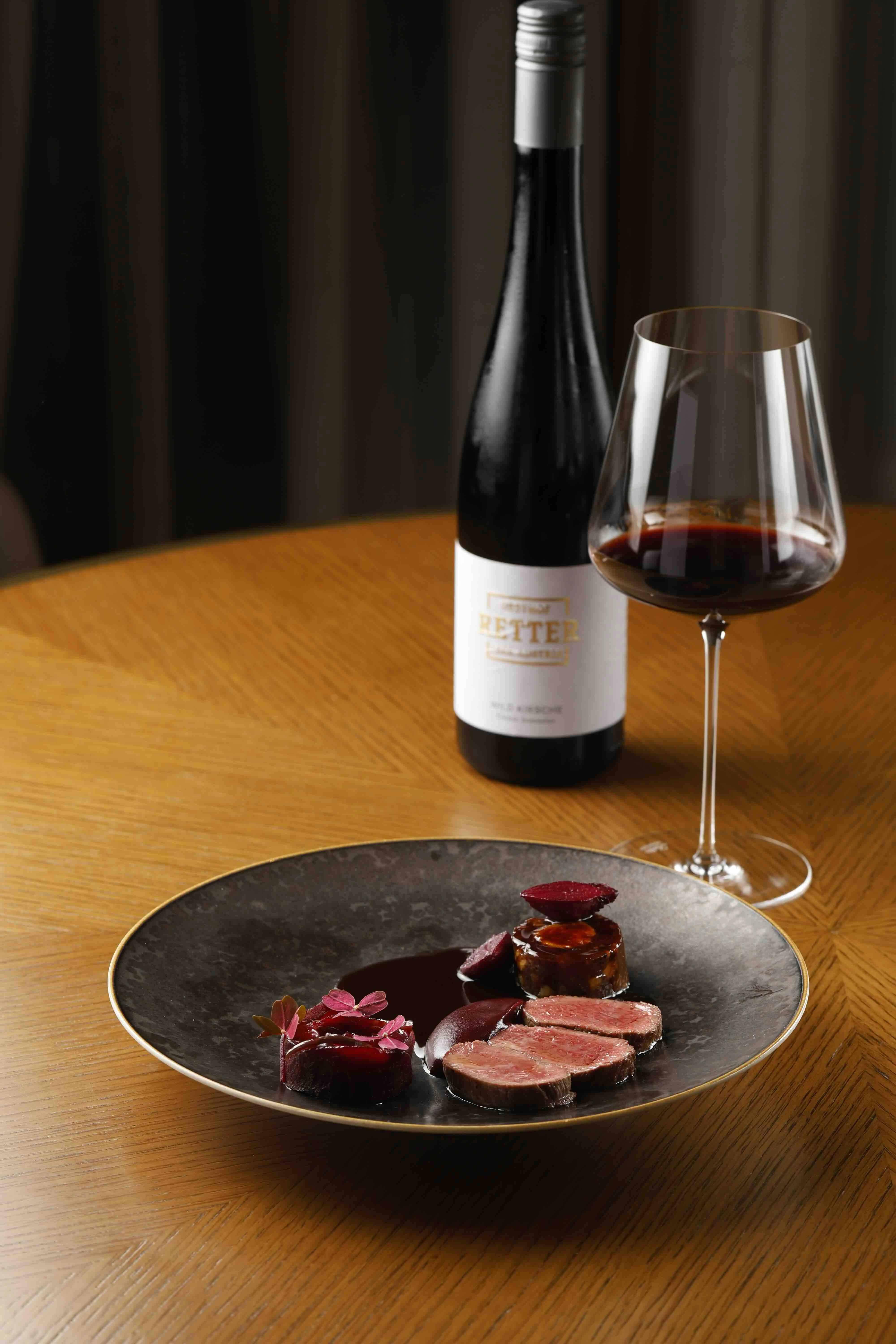
Above and beyond his years spent in some of the most acclaimed restaurants in the world, it was his upbringing in Vlissingen, a small harbourside town in the southwest of the Netherlands, which provided the most fertile fodder for the chef’s new approach. “The Netherlands literally means ‘lowlands’ as a large part of the country is under sea level. Twenty-six percent of the Netherlands is below the average sea level, and 50 percent is less than one metre above the average sea level. Since the sea level varies by 1.5 metres between low and high tide and even more during storms, 59 percent of the Netherlands is vulnerable to flooding by the sea and is feeling the challenges of global warming firsthand every day. So, growing up near the seaside in the lowest part of Holland meant constantly battling with rising sea levels. My family’s province had been submerged multiple times in its history, and I grew up hearing stories of survival from my grandparents, uncles and mother.
“As a child, my mother’s activism also left a lasting impression. She steered us toward becoming young members of Greenpeace – we’d join in efforts to protect whales during a time of heavy whaling, and we made a difference. Today, whale populations have resumed to a normal level worldwide. These childhood experiences taught me the power of personal contribution to affecting change – a lesson that continues to shape my culinary approach,” Ekkebus explains.
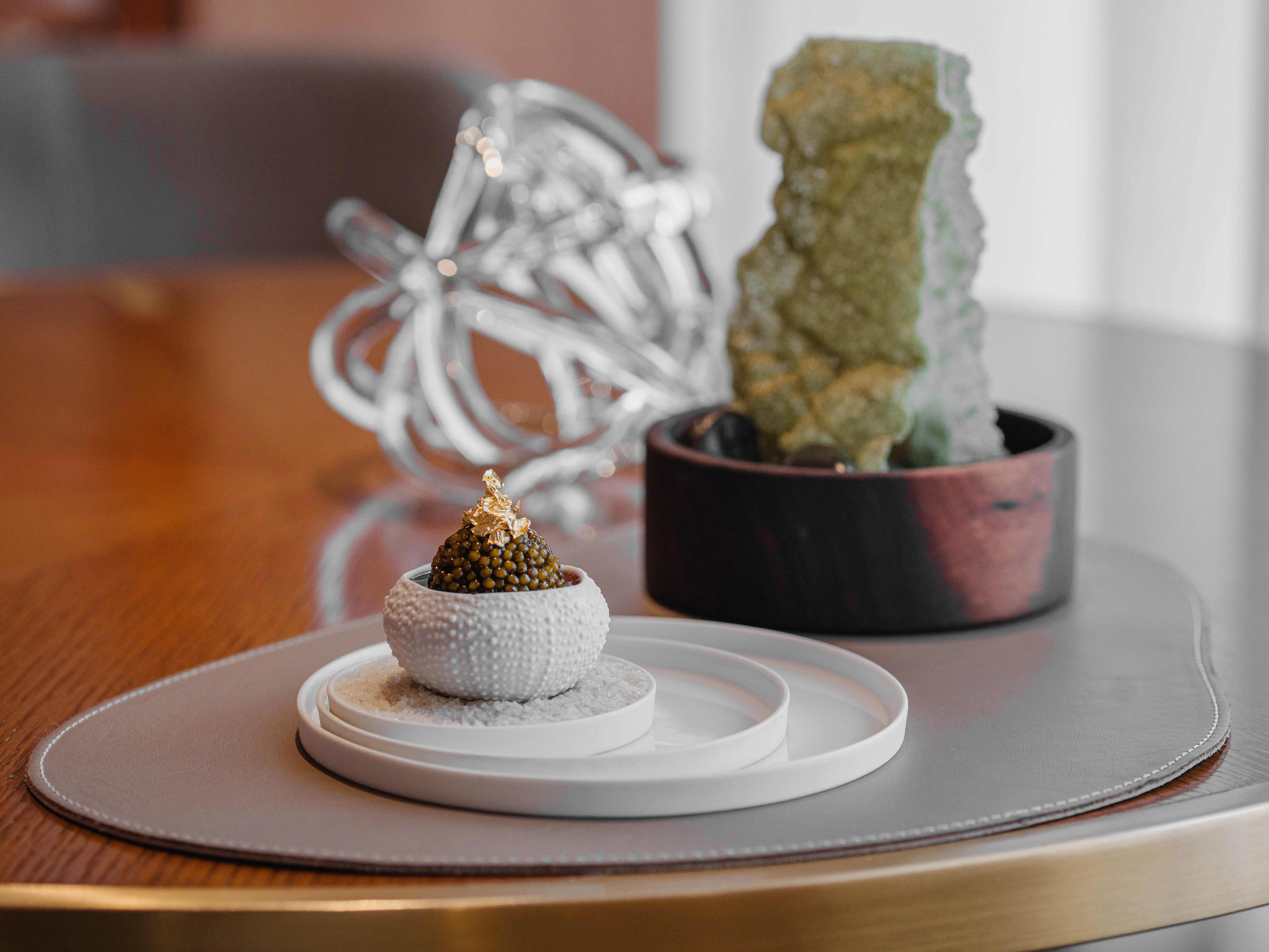
From sourcing to employment practices and daily operations, sustainability is threaded through every aspect of Amber – a dedication that earned the restaurant its Michelin Green Star in 2022 – and also the hotel, which Ekkebus leads as its director of culinary operations. “Our initiatives are established in an 18-page document that is available to the public on Amber’s website. But the one I’m most passionate about is reducing food waste,” he says. “Last year, our waste diversion was 45%, which is due to implementing various circular practices of diverting. For example, vegetable peelings, coffee grounds and eggshells are returned to our local farms, with the purpose of enriching the soil through their utilisation. And in our kitchens, we keep all leftover wines and sakes, which we use to make our own vinegars, and rice rests to make daily koji, our leftover bread is transformed into sourdough bread miso, and our vegetable and fruit trimmings into kombuchas. These are just a few initiatives but ones that we can easily achieve at the Amber kitchen.”
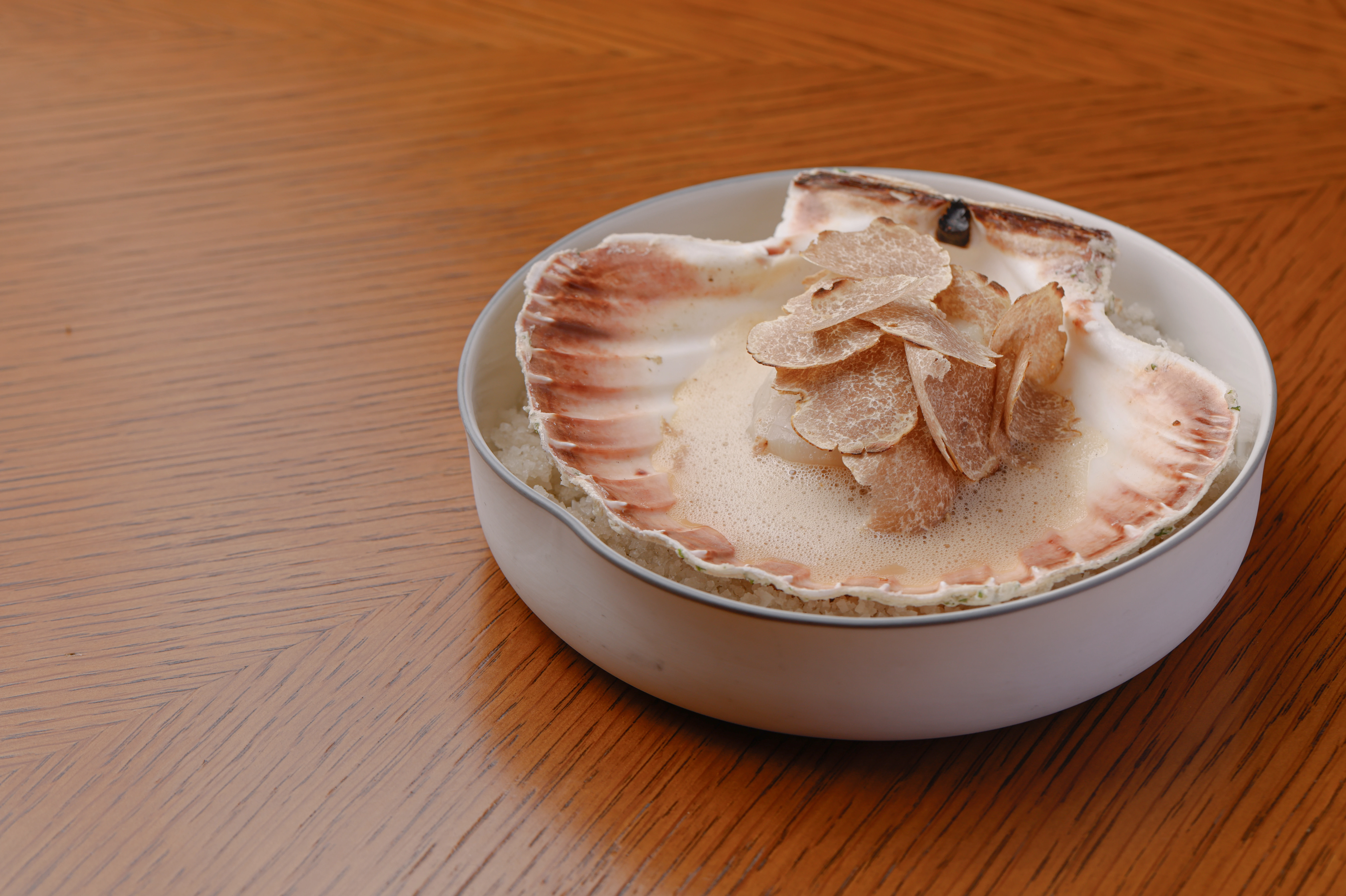
And so the question begs: now what? Three stars is not easy to come by, and even harder to hold on to. “I started my journey within the sustainability space without any formal training and have looked at our sustainability efforts with a glass-half-empty approach, meaning that it is and never will be perfect. I call it a continued work in progress. We will continue our search for the most ethical and sustainable ingredients while minimising our carbon footprint, the pressure on natural resources, our waste output, as well as focus on social inclusion,” Ekkebus says. “We’re also going through a huge transformation with the Landmark Mall and a hotel renovation where we will be adding new and exciting F&B destinations to our portfolio. We also want to improve the overall journey of our seventh floor, where we now hold eight Michelin stars. It’s too early to share, but it will be a significant enhancement of the Amber experience.”
Also see: Where to eat in Hong Kong in May 2025





